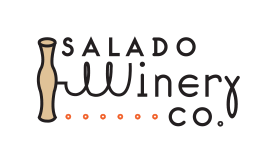First “Two-Sip Tele-Tasting” with Texas Wines
The following post is completely copied from the EATS Blog because we’re so excited to see some of our favorite wines do so well. We carry Texas Hills Orange Muscato, Brennan Viognier, & McPherson Sangiovese. Read on for Kim Pierce’s review…
The First “Two-Sip Tele-Tasting” with Texas Wines
The “Texas Two-Sip Tele-Tasting” put on by the Texas Department of Agriculture was so cool. Yup: TDA and cool in the same sentence.
Here’s how it worked. TDA sent 10 wines in nearly indestructible wrappers to a handful of people who write about wine. They were all tagged – 1A, 1B, 2A, 2B, etc. – and labeled with the varietal.
Then at the designated time, we all signed on to a Webcast – where our tasting guides led us through each pairing.
Our guides were Devon Broglie (Best Sommelier at the 2006 Texsom Conference and a Whole Foods Market Southwest wine buyer) and Craig Collins (second in ’06 to Devon, oversees Central Texas sales team for Prestige Wine Cellars). I know both these guys through the Texas Sommelier Association and grape-picking at Guy Stout‘s Hill Country vineyard. The varietals – viognier, sangiovese, Rhone reds, tempranillo and orange Muscat – were chosen because they thrive in Texas and point to the future of wine here.
The Texas wines were paired with comparable wines, and no one knew which was which. While all the Texans did well, the standouts were the viognier, tempranillo and orange muscat.
Brennan Vineyards Viognier 2008 ($19) vs. Australia’s Yalumba Eden Valley Viognier 2007 ($17.99):
I liked the Brenner better, for its bright, sweet-tart apricot, orange blossom, floral aromas that were, as Devon put it, “confirmed” in the fruit-forward flavor. The Yalumba was rounder, more honeyed and complex with a more pronounced gravelly mineral, a “classic viognier,” said Devon.
Llano Estacado Signature Melange 2007 ($11) vs. France’s La Vieille Ferme Rouge 2006 ($7.99):
I successfully identified the Texas blend (syrah, carignane, mourvedre, grenache and viognier) because of its stronger minerality, a characteristic I find in a lot of Texas wines. In the follow-up tasting notes, Devon and Craig wrote that the Llano is “softer and quicker to mature than most true Rhone growths.”
McPherson Sangiovese 2006 ($18) vs. Italy’s Badia Coltibuono Chianti Classico 2006 ($25):
Devon gravitated to the more rustic, iconic Old World wine. I couldn’t ID the McPherson, despite it being one of my favorite Texas wines with its bright, ripe cherry-strawberry-raspberry flavors. “This warm climate sangiovese is soft and mellow,” say the guys’ notes.
Inwood Estates Vineyards Cornelious 2007 ($39.50) vs. Spain’s Pesquera Tinto Ribera del Duero 2005 ($35):
Both guys loved Dan Gatlin’s unfiltered tempranillo, writing in their tasting notes that it’s “the new style of Spanish tempranillo which is often softer, with velvety tannins and more fruit forward. The result is rich, red-fruit character with dark cherry combined with leather, cigar-box, anise and silky tannins which are soft and approachable.” I just enjoyed both wines.
Texas Hills Vineyards Orange Moscato 2005 ($17.50) vs. Quady Electra Orange Muscat 2007 ($12.99):
The Texas wine showed heads and shoulders better than the Quady. The Texan was lyrical, sweet but balanced with bright acid, with aromas and flavors of orange zest, juicy peach and blood orange. Devon suggested pairing it with Blue Bell vanilla ice cream. By contrast, the Quady was viscous and cloying. No contest here. Now, where’s the Blue Bell?
Here’s the You Tube link to the Webcast: http://www.youtube.com/user/GoTexanWine. The hour-long video is broken up into five parts.
